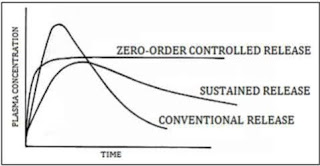Determination of the End Point
Determination of the End Point
The end point in the non-aqueous titrations is determined by the following two methods:
1. Potentiometric method:
In this method, the end point is determined by using the indicator electrode and reference electrode. Generally, glass electrode is used as the indicator electrode and saturated calomel electrode (SCE) is used as the reference electrode.
2. Indicator method:
Indicators used in the non-aqueous titrations are as follows:
➢ Crystal violet: It is used as 0.5% w/v solution in glacial acetic acid.
It shows the end point by changing the color from violet to blue followed by green then to greenish yellow.
➢ Methyl red: It is used as 0.2% w/v solution in dioxane and changes the color from yellow to red.
➢ Naphthol benzein: It is used as 0.2% w/v solution in ethanoic acid and shows the colour changes from yellow to green color.
➢ Quinaldein red: It is used as indicator for most of the drug determinations in dimethylformamide and shows the color changes from purple red to pale green.
➢ Thymol blue: It is used as 0.2% w/v solution in methanol with color changes from yellow to blue.
Titrants used in non-aqueous titrimetry
• Acidic titrants:
➢ Perchloric acid
➢ p- Toluenesulfonic acid,
➢ 2,4-Dinitrobenzenesulfonic acid
• Basic titrants
➢ Tetrabutylammonium hydroxide
➢ Sodium acetate
➢ Potassium methoxide
➢ Sodium aminoethoxide
Preparation and standardization of 0.1(N)HClO4 acid
Take 8.5 ml of 72% HClO4
↓
Mix
900 ml Glacial acetic acid
↓
add 30 ml of acetic anhydride
↓
Then make up to volume 1 lit with glacial acetic acid
↓
stand for 24 hours.
Standardization:
Potassium hydrogen phthalate is used as standardization agent. 0.5 ml potassium
hydrogen phthalate + 25 ml glacial acetic acid in a 100ml conical flask → warm to
dissolve → cooled →titrate with 0.1 N HClO4
Precautions for the non-aqueous titrations are as follows:
1. Moisture must be avoided.
2. Carbon dioxide must be avoided.





Comments
Post a Comment
Thanks